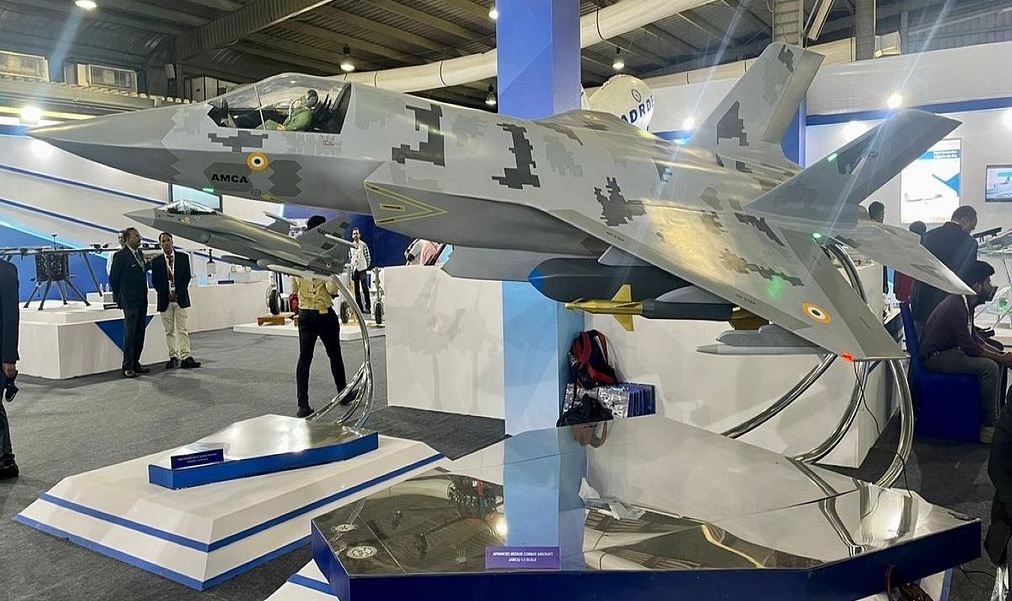AMCA Mk2 Success Hinges on New 110 kN Engine: Lessons from Kaveri Crucial, Says Former IAF Chief

India's ambitious Advanced Medium Combat Aircraft (AMCA) Mk2 project is facing a critical moment. The development of a powerful, high-thrust engine—specifically a 110 kN thrust engine—is seen as the linchpin for the success of the 5th generation fighter jet, according to former Indian Air Force Chief, Air Chief Marshal R.K.S. Bhadauria. In a recent interview, Bhadauria emphasized that without this engine, the AMCA Mk2 may struggle to compete with global peers.
The AMCA program, which was recently greenlit by India's Cabinet Committee on Security (CCS), is part of India's larger push towards self-reliance in defense technology. The Mk1 variant of the AMCA will be powered by an upgraded GE F414 engine, which produces around 98 kN of thrust. But the Mk2, designed to have more advanced capabilities, requires an indigenously developed 110 kN engine. This engine will not only ensure the aircraft's high-speed performance but also deliver the stealth, maneuverability, and fuel efficiency critical for modern combat scenarios.
The new engine will be developed in collaboration with a foreign aerospace firm, an approach that seeks to combine India’s growing expertise in aeronautics with international experience in high-thrust engine design. Bhadauria's comments reflect a sense of urgency: the engine's development timeline must be maintained to prevent delays that could set back the entire AMCA project. The stakes are high since this engine is expected to give the AMCA Mk2 a competitive edge in both regional and global defense markets.
One of the most anticipated features of the new engine is the ability to achieve supercruise—sustained supersonic flight without engaging afterburners. This feature is already present in advanced jets like the F-22 Raptor and Eurofighter Typhoon, and its inclusion in the AMCA Mk2 would make the Indian fighter one of the few aircraft globally capable of such performance. Supercruise enhances fuel efficiency and gives a strategic advantage in combat, allowing the aircraft to maintain high speeds over long periods without burning excessive fuel.
Bhadauria's caution stems from past lessons, particularly the challenges faced by the Kaveri engine project, which was intended for India’s Light Combat Aircraft (LCA) Tejas. The Kaveri engine, developed indigenously by the Gas Turbine Research Establishment (GTRE), failed to meet the performance requirements and encountered several delays, eventually forcing the LCA program to rely on foreign engines like the GE F404. The Kaveri's setbacks underscored the complexity of developing a high-performance engine in-house, an effort that requires technical expertise, precision manufacturing, and sustained funding.
However, Bhadauria believes that the lessons from the Kaveri project can guide the AMCA Mk2's engine development, helping to avoid similar pitfalls. To mitigate risks, India is reportedly in talks with multiple aerospace companies, seeking to strike a balance between indigenization and international collaboration. This partnership will likely ensure that the AMCA Mk2’s engine meets global standards of reliability and performance while incorporating Indian innovations in engine design.
The AMCA Mk2 is envisioned to operate as a multi-role fighter with a focus on air superiority and strike missions. Its 110 kN engine is expected to support various mission profiles, including high-altitude interceptions, ground attack, and even deep-strike capabilities. The jet will be equipped with advanced stealth technologies, a state-of-the-art avionics suite, and an array of precision-guided munitions, all of which will require the engine to provide consistent, reliable performance across diverse combat scenarios.
As India aims to field the AMCA Mk1 by the early 2030s, the Mk2 variant will follow soon after, assuming the engine development proceeds without significant delays. Bhadauria’s warnings highlight the need for close monitoring of the engine project to ensure that the timelines are adhered to. He noted that any technical hiccups or bureaucratic delays in engine development could have a cascading effect on the entire AMCA program.
Ultimately, the success of the AMCA Mk2 and its 110 kN engine will represent a milestone in India's defense modernization efforts. This project holds the potential to solidify India’s position in the global aerospace industry, marking a significant step toward self-reliance in high-end defense technologies. With a capable and reliable engine, the AMCA Mk2 could become a benchmark for future fighter jet programs, both within India and globally.


